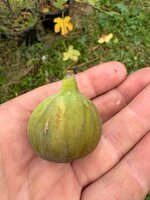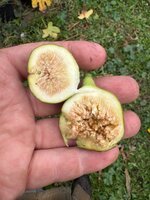Sorry, at this time it is just fairy stories. I have a huge amount of local wasp/Caprifig/Fig data, and all of the planting and growing records from the massive orchard that was in this area in the early 1900's, every fig ever planted there, and there was never any breeding attempted at that time.
Of all of the almost 50 Caprifig trees that are now known to me here, they are all Ficus Carica Caprifigs, and there is nothing to suggest anything different. The only different Caprifig or Female tree I have found, is a Female Palmata that is some distance from me at the other side of the city, it is not old, and I have a tree growing from that.
You certainly may believe what you will, but until anything is ever proven, and I will be sure to mention anything if it is, it is still fairy stories, or guesses, and I believe we have already had more than enough of them pushed at us over the years, most now debunked, fortunately.


